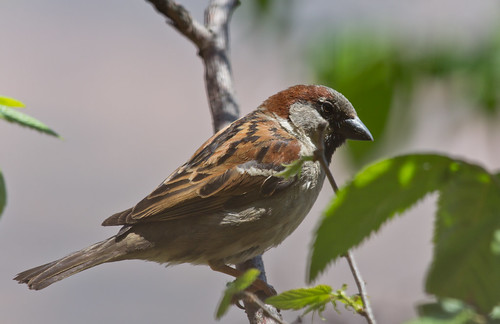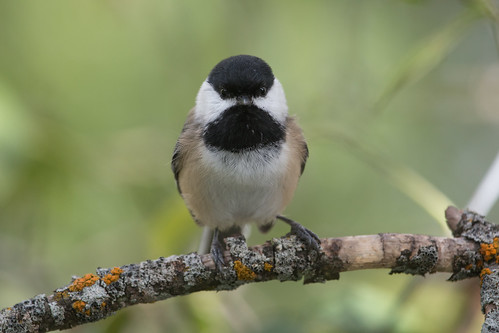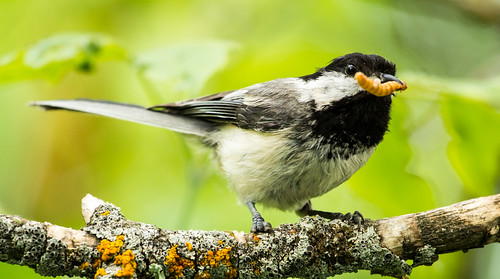December 10 marks the 184th anniversary of the birth of Emily Dickinson, the reclusive poet who lived out almost her entire life in her family home in Amherst, Massachusetts.
In 1845, when she was 14, a religious revival took place in Amherst, and 46 of her friends and relatives made public vows of faith. Dickinson wrote to a friend the following year: "I never enjoyed such perfect peace and happiness as the short time in which I felt I had found my savior.” But she couldn’t hold onto that religious fervor: a few years later she wrote her poem #236:
Some keep the Sabbath going to Church –
I keep it, staying at Home –
With a Bobolink for a Chorister –
And an Orchard, for a Dome –
Some keep the Sabbath in Surplice –
I, just wear my Wings –
And instead of tolling the Bell, for Church,
Our little Sexton – sings.
God preaches, a noted Clergyman –
And the sermon is never long,
So instead of getting to Heaven, at last –
I’m going, all along.
The "wings" she wears are on her bonnet; the singing "little Sexton" is the House Wren. Emily Dickinson may not have been a birder, but she did pay attention to them.
 |
| Our little Sexton |
Unfortunately for us, in the bird poem quoted more than any other, #314, “Hope is the thing with feathers,” she never names a particular species. She was a clear-eyed observer, so I find it hard to believe the bird perched in her soul was a generic one. The poem goes:
“Hope” is the thing with feathers -
That perches in the soul -
And sings the tune without the words -
And never stops - at all -
And sweetest - in the Gale - is heard –
And sore must be the storm -
That could abash the little Bird
That kept so many warm -
I’ve heard it in the chillest land -
And on the strangest Sea -
Yet - never - in Extremity,
It asked a crumb - of me.
I’ve often wondered what species she was thinking of. It’s certainly not the cardinal—we think of cardinals as singing throughout the winter, but cardinals were originally more of a Southern species and none had ever been seen in the wild in Massachusetts during Dickinson’s life. The first record of a nesting pair in Massachusetts was not until my own lifetime—1958.
 |
| Emily Dickinson never saw a wild cardinal. |
I also doubt she was thinking of the Blue Jay, not because they wouldn’t have wintered on her property but because the bird in the poem is “little” and sings a “tune” that is “sweetest in the Gale"—few people would associate a Blue Jay with any of that.
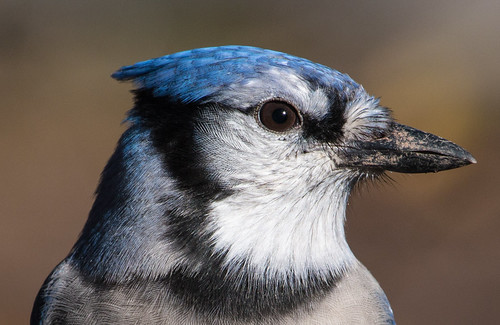 |
| Blue Jays were probably not perched in her soul. |
It was also definitely not a starling—that species wasn't introduced to North America until 1890, four years after her death.
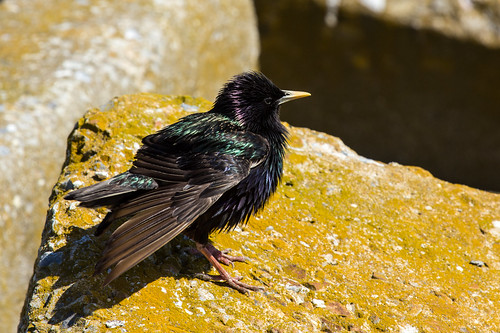 |
| Emily Dickinson never saw a starling. |
I also doubt the little bird was a House Sparrow. They’d first been introduced to North America in 1850, in Brooklyn, New York, when Dickinson was 20. There were multiple introductions in various areas in the United States during the rest of her life, including the first accidental release in Massachusetts, in Boston, in 1858, when some birds being shipped from Liverpool to Peace Dale, Rhode Island, escaped. Ten years later, in 1868, about 20 House Sparrows were intentionally released on Boston Common; the following year, more were released there along with 20 released a mile away in Charlestown, Massachusetts. They had certainly made their way to Amherst by the time Dickinson died in 1886—by then, most ornithologists considered them serious pests—but it’s believed that she wrote the vast majority of her poems before 1865, when it's unlikely House Sparrows had yet reached Amherst in any numbers.
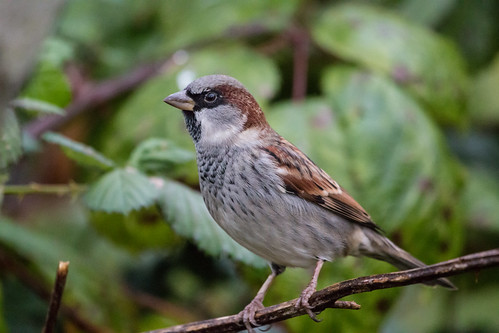 |
| She may have seen a House Sparrow, but probably not until after the poem was written. |
Digression regarding the House Sparrow...
Interestingly, in 1889, four years after Emily Dickinson’s death, Walter Barrows wrote a treatise for the U.S. Department of Agriculture’s Division of Economic Ornithology and Mammalogy titled The English Sparrow in North America, which included a section of “Recommendations to the People,” beginning:
The English Sparrow is a curse of such virulence that it ought to be systematically attacked and destroyed before it becomes necessary to deplete the public treasury for the purpose, as has been done in other countries. By concerted action, and by taking advantage of its gregarious habits, much good may be accomplished with little or no expenditure of money.
He recommended placing food out for them for a week, so that “large numbers may be killed at one time by firing upon them with small shot.” He also recommended poisoning them with “grain soaked in solutions of arsenic or strychnine, or by meal mixed with the poison in powder." Fortunately, he also noted that "poisoning is attended with some danger and should be attempted only by official Sparrow-killers.” He suggested that “most satisfactory results” could be obtained via the “systematic destruction of their eggs, nests, and young,” and detailed his favorite methods. He wanted people to form "sparrow clubs"for the sole purpose of killing them, and suggested market hunting them for restaurants, where they could be served as “rice-birds” during winter, when Bobolinks, the species normally called the rice-bird, had migrated from North America.
Two years later, in 1891, Charles V. Riley wrote an article for
Scientific American titled “How to Get Rid of English Sparrows,” in which he also advocated poisoning them with arsenic.
The American Ornithologists’ Union didn’t add the House Sparrow to the
AOU Checklist of North American Birds until 1931, the year they added the Ring-necked Pheasant, Rock Pigeon, and European Starling, too. (They must have been reluctant to start including birds that had never been part of America's natural avifauna.) Although House Sparrows are believed to have originated in Africa and spread to Europe and Asia along with civilization, and although many of the sparrows imported to America in the 1800s came from Germany as well as from England, the AOU officially called them English Sparrows until 1957. My
Little Golden Activity Book: Bird Stamps, was ahead of the AOU, calling the species the House Sparrow in 1949—that’s where I learned the name.
 |
| Emily Dickinson, left, with her brother and sister, around 1840. Notice that none of them are wearing binoculars. |
... and back to Emily Dickinson.
But since the bird perching in Emily Dickinson’s soul is probably not a House Sparrow, it’s time to get off that digression and decide what it actually was. One possibility is the Dark-eyed Junco. She surely saw them in winter, and although they don’t start singing until March, she’d have most assuredly heard their songs during late winter storms.
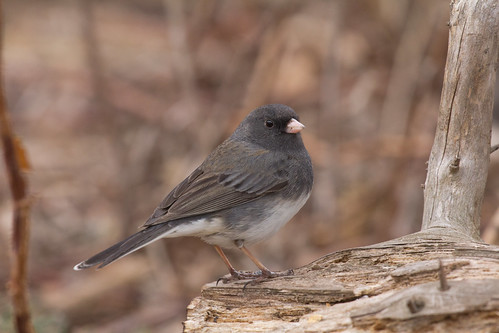 |
| Emily Dickinson definitely must have observed "snowbirds." |
And it could have been one of many winter finches—redpoll, siskin, Pine or Evening Grosbeak, Purple Finch or American Goldfinch. Those are all hardy, independent birds, many of their calls and songs are sweet, and she’d certainly have seen the little survivors getting through fierce winter storms.
 |
| Okay, it could have been a Pine Grosbeak. |
Of course, I personally like to think the little bird perched in Emily Dickinson's soul and singing, unabashed, through the gale, was a chickadee.
She’d have been familiar with them, they're tiny, they sing sweetly, and they don’t like crumbs, so wouldn’t have asked one of her. My own chickadees don't ask for food from me, either—they demand it, and are especially insistent on mealworms. If they're perched in my soul, it's because for them, mealworms are soul food. So I’ve modified her poem just a bit:
#314a
“Hope” is the Black-capped Chickadee -
That perches on my sill -
And taps the pane and stares at me -
And never stops - at all –
Until I give him mealworms.
And sweetest - in the Gale - is heard –
And sore must be the storm -
That could abash the little Bird
That keeps my heart so warm –
As long as I give him mealworms.
I’ve heard him on the chillest days -
From dawn until night’s eve -
Yet - never - in Extremity,
He asked a crumb - of me.
No, he wants mealworms.





